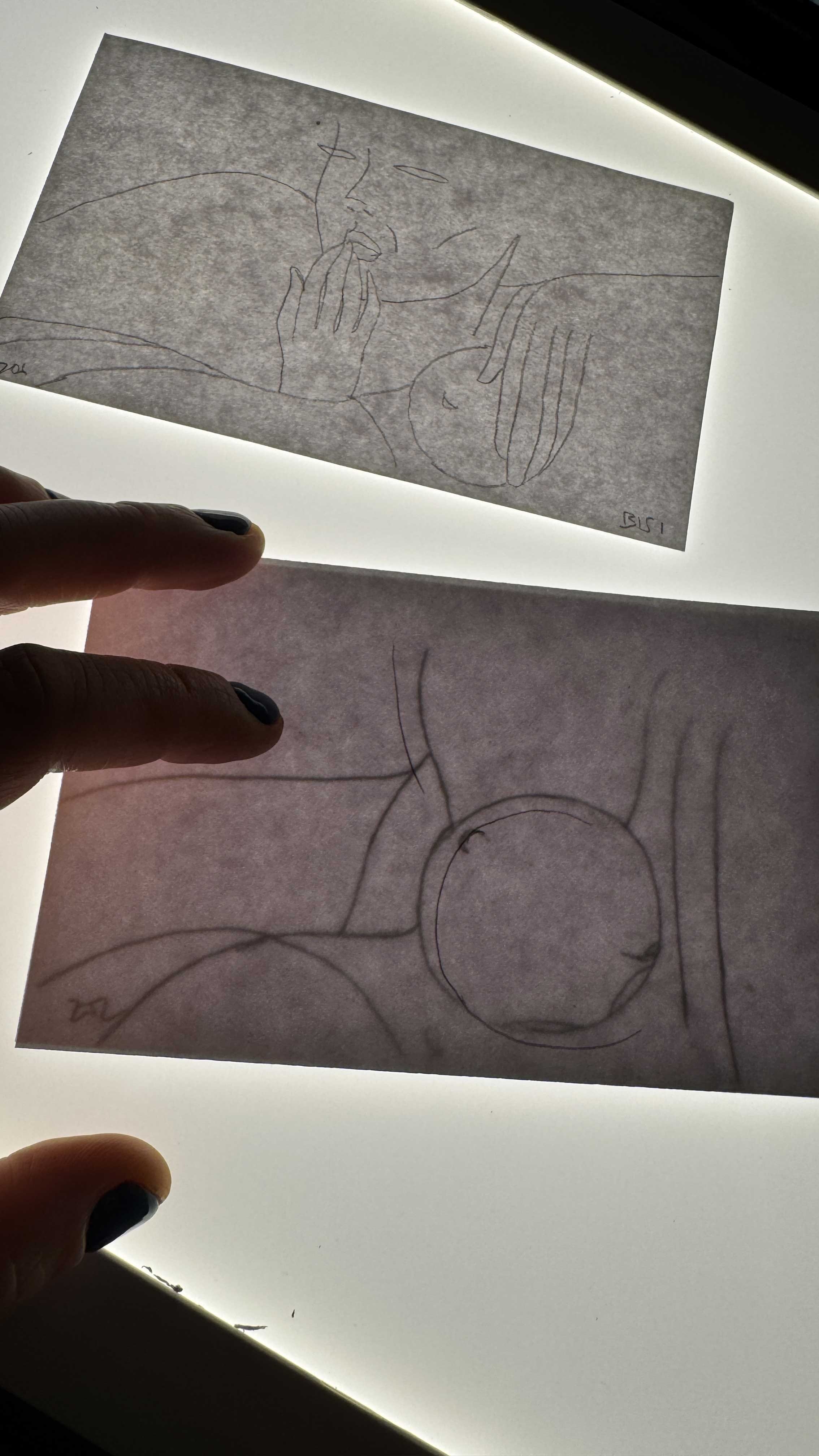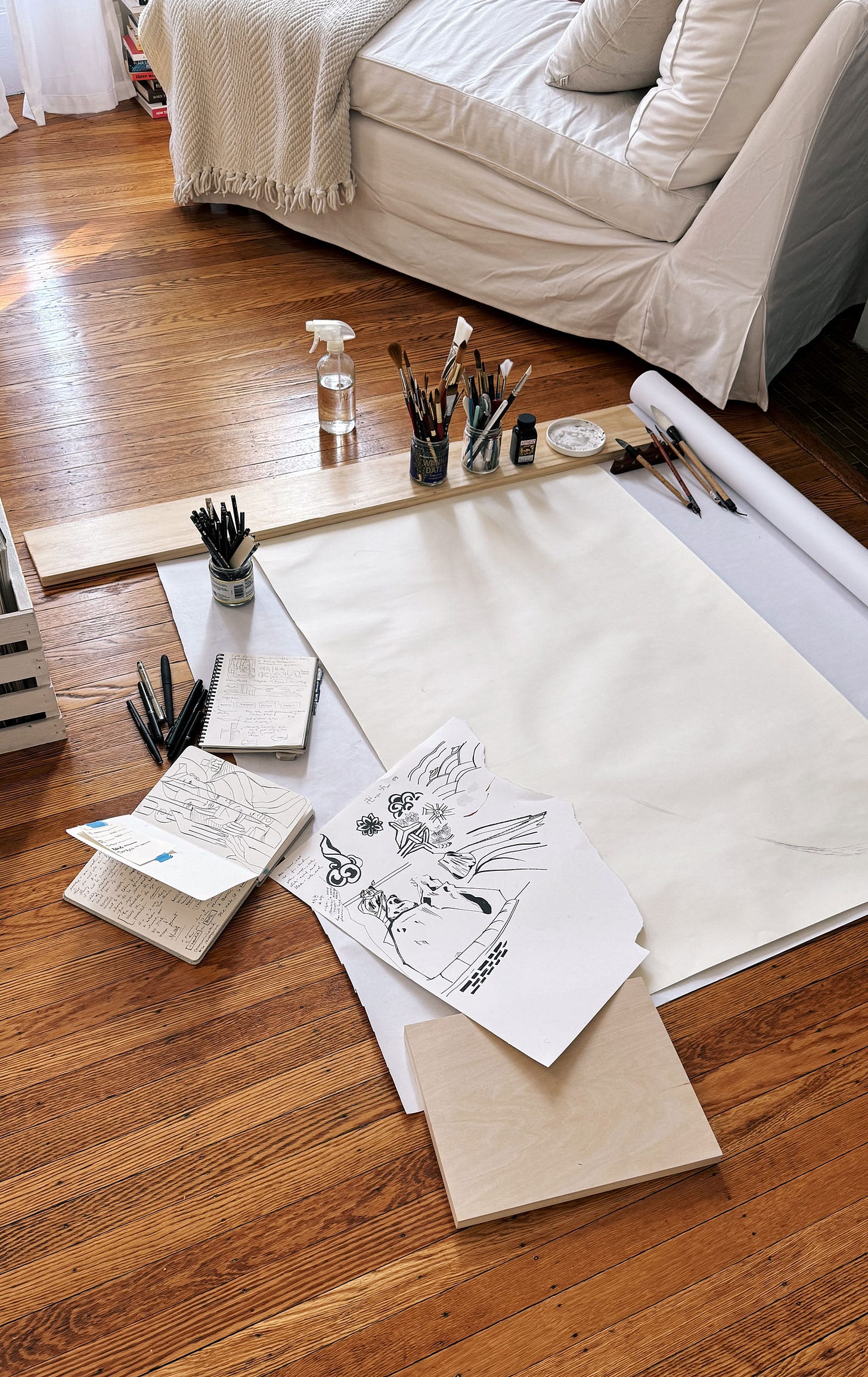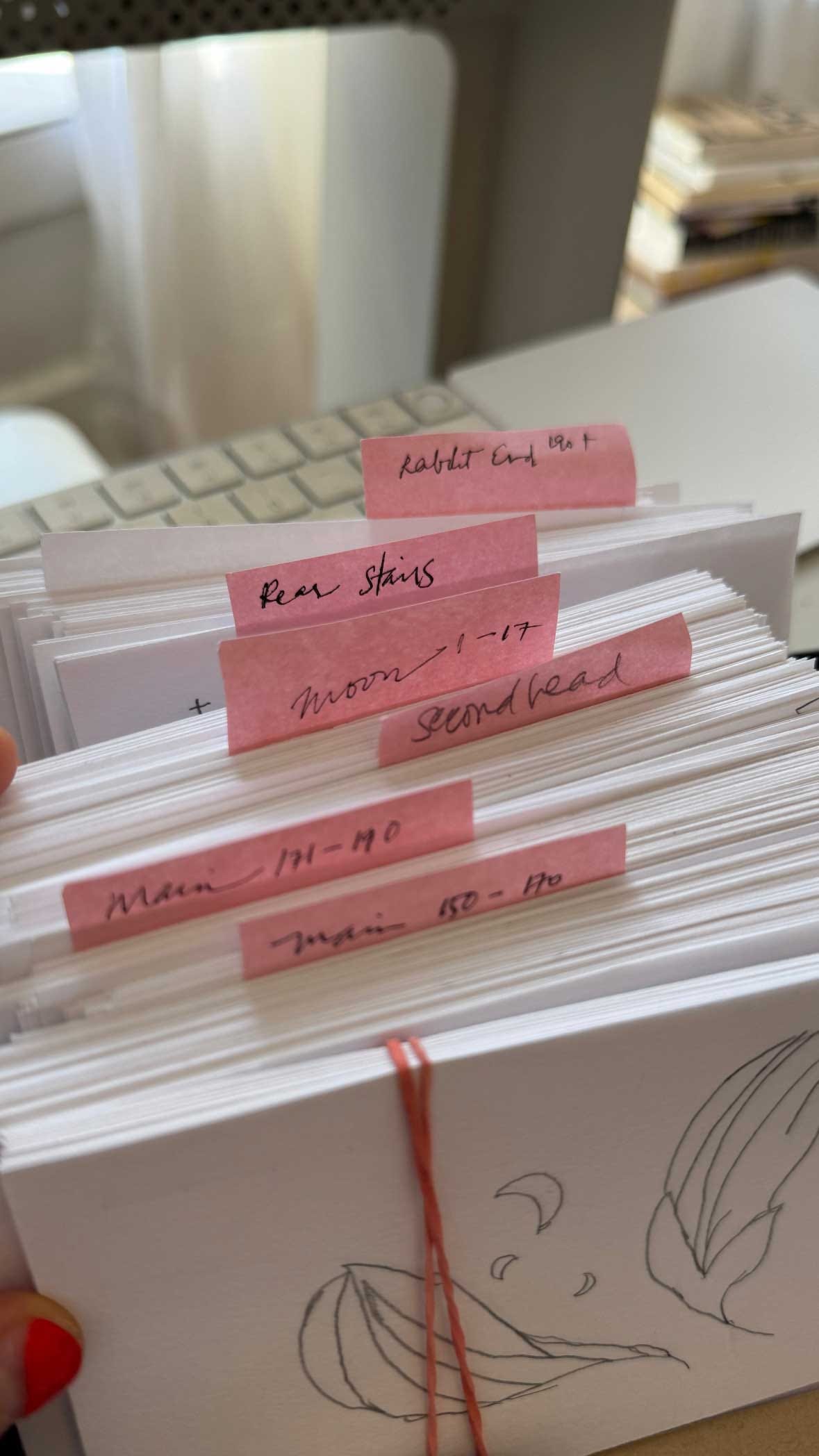104. Weirdo
How we do our own thing. The Academy's Gold Fellowship; acrylic on hanji; completed animation primer. Eno.
Remember how a few months ago I had to film a pitch in one week?
I can now share why: I was nominated for the Academy’s Gold Fellowship for Women back in March. In June I was notified that I’d advanced to the semifinals and would I please provide a formal pitch. In August, I received news that I was one of the finalists. In September, fellowships were awarded by the Academy of Motion Picture Arts and Sciences to one U.S.-based, and one non-U.S., woman filmmaker. Spoiler: I did not receive the U.S. fellowship (and the $35,000 that comes with it), but as one of the final contenders I will get matched with an Academy mentor in 2026.
The six of us (including the two fellowship recipients) were just announced by name:
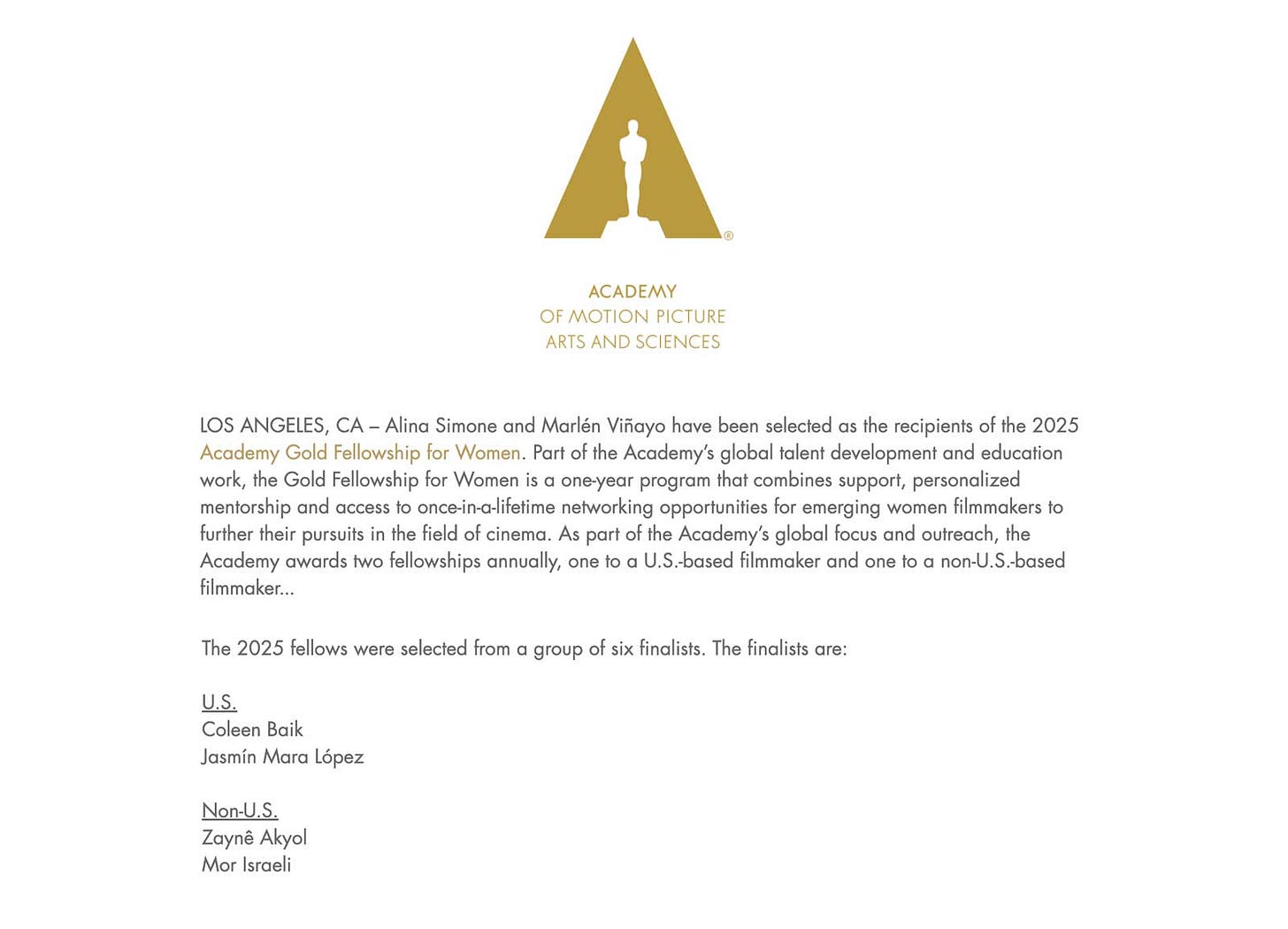
I’m incredibly honored. The recognition feels doubly nice because I’ve mostly been heads down, just doing the hard things that make me happy (versus the hard things that don’t).
A big part of why I tell stories is to connect, but ultimately my practice is a long game for the ideas, the doing of it—because, quite simply, I like it.
I like external rewards too, and am grateful for them. They can be beautiful byproducts of, and lead to financial support for, living the way I want to live. In any case, I hope it’s encouraging to see them come to a weirdo like me: doggedly consistent, consistently advancing; who nevertheless is not polished or methodical in the conventional sense.
In the studio
I’m working part time on my next animated short film. In the previous issue, I talked about non-animation work. It went out only to Investors because of the intimate nature of the content; directly from journals and sketchbooks. This issue contains both non-animation and animation updates. Tendinitis seems to be improving, albeit at a glacial pace.
Yaksok · acrylic on hanji
I took a brief break from my film to start preparing for an upcoming show called Yaksok (Korean, “Promise”) in Los Angeles. Two shots from the recent investor-only issue for context, below.
After many sketches and compositional iterations, I decided to paint this:
I’d fully intended to paint it on a cut of 26x42 inch paper:
But ended up on these practice strips of hanji with acrylic of all things, both of which I’ve relatlively little experience with:
When I hung the strips up to dry, I was struck by how they moved when I moved. I also liked how the picture changed according to my perspective:
I’m going to make a few refinements and will repaint these. I also need to figure out mounting. But the meat of the installation is in a good place! This process has been for me near-ideal in terms of reception-to-articulation, where I listened and let surface what wanted to surface, how it wanted to surface.
This piece, tentatively titled Manifest, explores the idea that a promise is a collaboration between the promiser and the promisee. The kinetic, sculptural aspect of the work has felt very much in vibe with the idea; its fragility a metaphor, its movement suggestive.
Animation · graphite on index cards
One of the most valuable features of a live/work art studio, at least for a type A neat-freak like me, is its modularity. Nearly everything in my flat can be repositioned, reconfigured, and repurposed with ease:
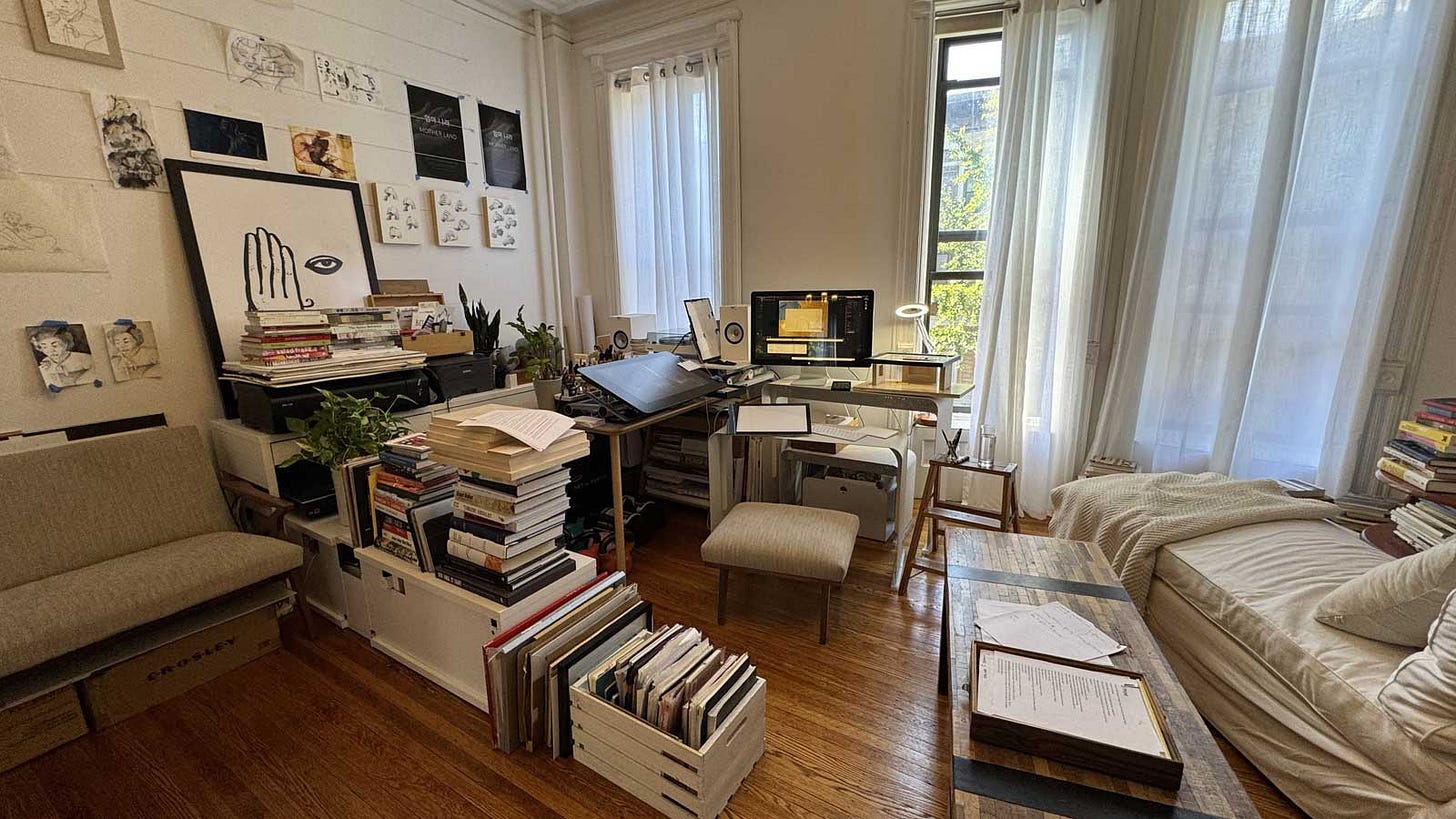
I’m trying to animate with this setup whenever possible to keep my dining table free of clutter. As for the animation itself, the primer1 is finally finished. I could honestly refine for a while longer (and do have a few loose ends to tie up), but part of why I create a primer in the first place is to be able to go fast without being precious.
Inbetweening, 1x to 4x to 20x speed:
Most importantly, a primer provides: an opportunity to practice and experiment “in theme,” a contextual reference of iterations (style, mediums, technique), and immediately applicable lessons.
Key takeaways from the primer
Separate motion tracks for flexiblity, within reason.
“Pre-comping” (collapsing initial layers into one before adding another) is a way to work with complicated, multi-threaded movement.
Finalize speed of one layer before adjusting those of related layers.
Mind the safe areas. Experiment with field guides, maybe a stencil.
Straight-ahead animation has a distinctive, dreamlike feel compared to pose-to-pose; lean into this instead of fighting it.
Slow things down. This is related to the previous takeaway.
Store index card drawings like recipes.
Write frame numbers in the upper right corner of cards for easy reference.
Previously, I had frame numbers bottom left, making it hard to locate drawings quickly:
Use a standard, low gsm index card. Low quality paper is not necessarily “bad;” lots of professional artists like Tina Berning intentionally paint on “cheap” or found paper, even with watercolors.
Use an acrylic sheet to flatten paper before shooting, as needed.
Use controlled lighting consistently. (I’ve been lazy but will need to be stricter about this going forward.)
Use a bright lightbox; struggling to inbetween is no fun.
I vetted two light boxes recently, by the way:
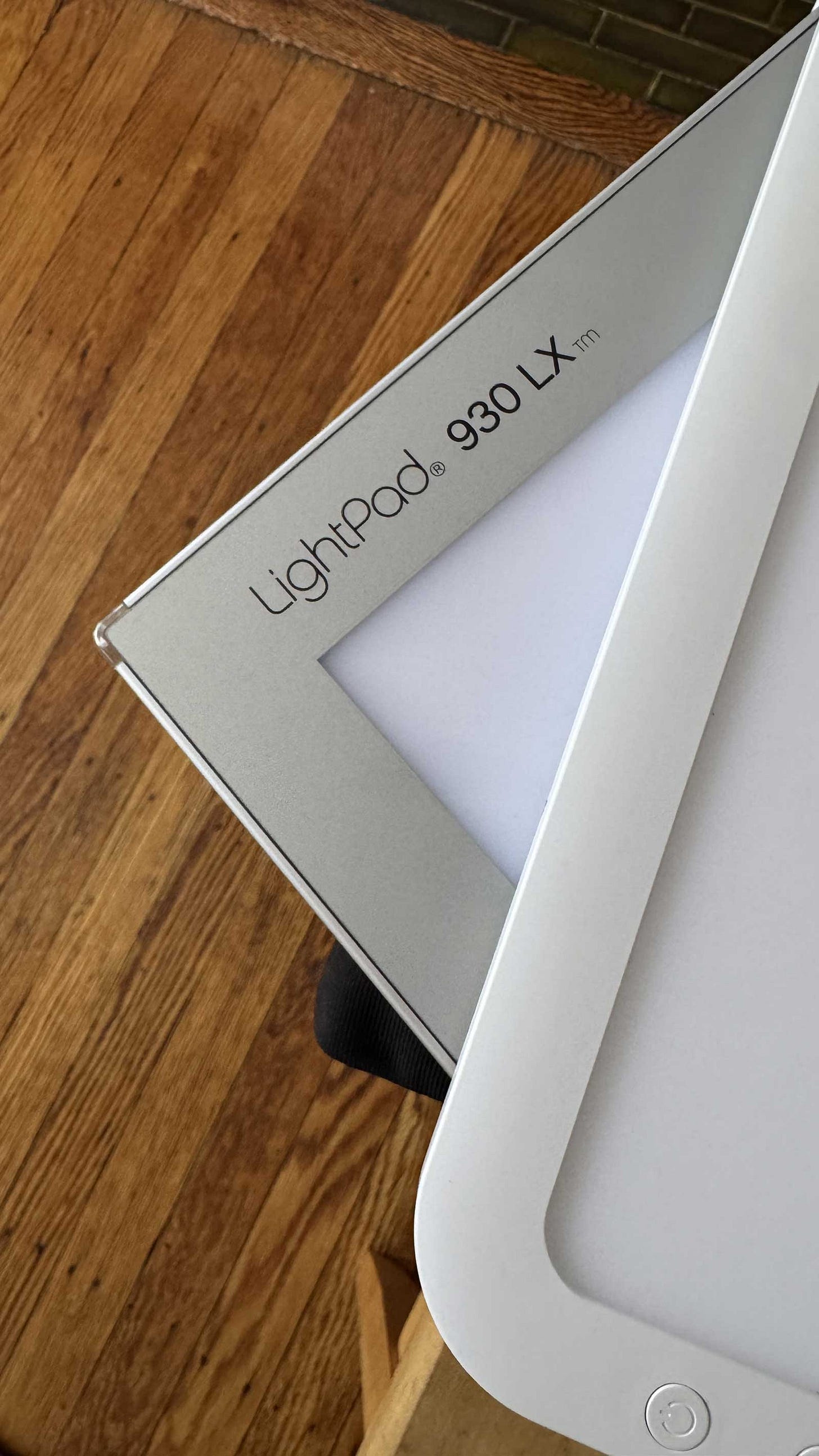
The Artograph LightPad 930 LX is 500 to 5500 Lux adjustable, 6-7K cool white (not great for working at night), 12x9, wired only, $146.97. A relative no-name (Zocelight) is 2660 to 8860 Lux adjustable, warm temperature available, also 12x9, wired and battery, $29.99. To be honest the cheaper one works great. I love that it provides a warm temp option and doesn’t need to be plugged in. It has a ridge which may bother some but I ended up using it for registration and it kept cards from sliding off when working at an angle.
A mechanical pencil won’t provide as much texture as a regular pencil but it works well for detailing at small scale. HB for a dark-enough line that erases well.
Setting up (and in general, working with) a downshooter takes time. The slightest camera bump means moments lost to re-registration. Keep optimizing. Use tricks. Set up as much as possible the day prior.
I’ve been using this numbering system: base 1, 2, 3, 4; breakdowns 10, 20, 30, 40, inbetweens 11, 12, 13, 14. I may do a whole ‘nother issue on this.
Evolution of technique and expression in the primer
0 to 6s: sloppy as I figure things out, animating small on paper (I think 2x3”) for the first time, using Dragonframe (note the pre-license watermark).
7 to 15s: improving alignment, fluidity, expression. Kind of digging the visibility of annotations and hardware in some of the frames.
16s onward: improving resolution, dialed-in scale (3x5”), began using a mechanical pencil for easier inbetweening. Lots of flicker due to inconsistent lighting, which I don’t wholly dislike.
21s onward: playing with 3+ layers (moon, tectonic heads, stairs). A special kind of hell.
37s onward: finally leaning into what makes straight-ahead unique.
Investors, continue reading to watch the primer with sound, below. I also discuss the biggest takeaway from this exercise, share what I’ve been taking in for inspiration and nourisment (Provisions), and end with a microessay about Brian Eno (In Closing).
Everyone else, hope you enjoyed this rather dense and nerdy issue!


